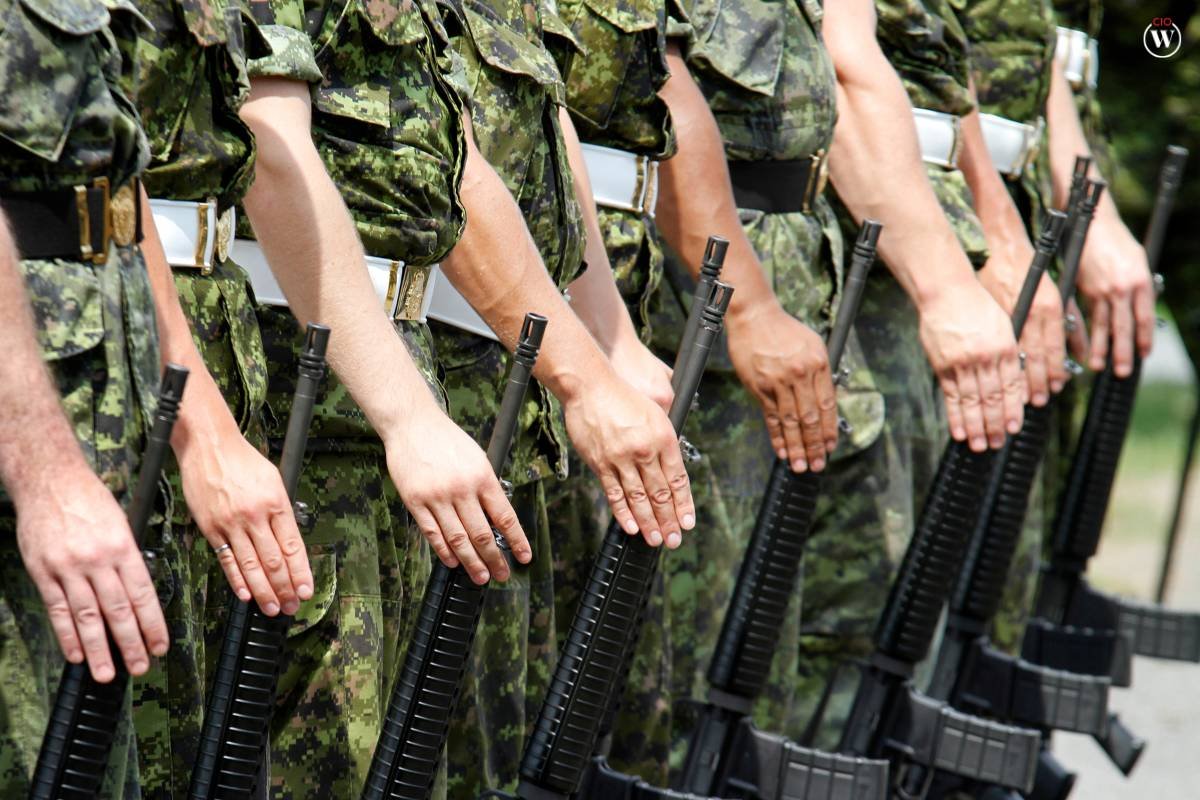Leadership in the military is a dynamic and multifaceted concept that plays a crucial role in achieving mission success, maintaining discipline, and fostering a cohesive unit. The military environment demands leaders who can adapt to diverse challenges, make critical decisions under pressure, and inspire their teams to excel. This article delves into the various leadership styles in the military organizations, highlighting their characteristics, advantages, and potential drawbacks.
Here is a list of various Leadership styles in the military:
1. Authoritarian Leadership
One of the traditional leadership styles in the military is authoritarian leadership. In this style, commanders dictate orders with minimal input from subordinates, emphasizing strict discipline and adherence to established protocols. While this approach is effective in promoting rapid decision-making and maintaining order in high-stakes situations, it may stifle innovation and hinder the development of critical thinking skills among team members.
Authoritarian leaders often excel in situations where a quick and decisive response is essential. During combat, for example, clear and concise orders are crucial for the coordinated execution of maneuvers. The chain of command is strictly enforced, and disobedience is met with immediate consequences. This style fosters a sense of order and discipline, creating a structured environment where tasks are executed with precision.
However, the downside of authoritarian leadership lies in its potential to create a rigid and inflexible organizational culture. Subordinates may feel hesitant to voice concerns or offer suggestions, fearing reprisals. This lack of open communication can impede the flow of innovative ideas and solutions, hindering the organization’s ability to adapt to rapidly changing situations.
2. Transformational Leadership
In contrast to authoritarian leadership, transformational leadership focuses on inspiring and motivating individuals to achieve exceptional results. Transformational leaders in the military seek to cultivate a shared vision, encourage creativity, and foster a sense of camaraderie among team members. This style is particularly effective in situations that require adaptability and collaboration, as it promotes a positive organizational culture and enhances morale.

Transformational leaders are often charismatic individuals who can articulate a compelling vision for the future. They inspire their teams to transcend their individual interests for the collective good of the organization. This leadership style is especially valuable during periods of change, such as the introduction of new technologies or the restructuring of military units.
One of the key strengths of transformational leadership is its emphasis on personal development. Leaders invest time and effort in understanding the strengths and weaknesses of their team members, providing mentorship and guidance to help them reach their full potential. This approach not only enhances individual performance but also contributes to the overall effectiveness of the military unit.
However, the potential downside of transformational leadership lies in its reliance on the leader’s personality. If the leader loses favor or becomes ineffective, the entire unit may experience a decline in morale and motivation. Additionally, the emphasis on collective goals may sometimes overshadow the importance of adhering to established procedures, potentially leading to a lack of discipline.
3. Servant Leadership
Servant leadership places the leader in a role of service to their subordinates. This leadership style in the military prioritizes the well-being and development of team members, aiming to create a supportive and empowering environment. In the military context, servant leadership can build trust, enhance communication, and foster a sense of loyalty among troops.
Servant leaders actively seek to understand the needs and concerns of their subordinates, making a concerted effort to address these issues. They view leadership as a responsibility to serve, rather than a position of authority. This approach can be particularly effective in building strong interpersonal relationships within the military unit, leading to increased cohesion and a shared sense of purpose.
However, critics argue that excessive focus on subordinates’ needs may lead to indecisiveness in critical situations. In combat scenarios, swift and decisive action is often required, and a leader overly focused on accommodating individual preferences may struggle to make tough decisions. Striking the right balance between serving the needs of individuals and achieving the collective mission is crucial for the success of servant leadership in the military.
4. Transactional Leadership
Transactional leadership operates on the basis of a clear chain of command, where leaders reward or discipline subordinates based on their performance. This style relies on a system of incentives and consequences to ensure compliance with established standards. While transactional leadership can provide a structured framework, it may not be as effective in situations that demand adaptability and creative problem-solving.

Transactional leaders establish clear expectations and consequences for their subordinates. This approach is well-suited for tasks that require precision and adherence to established procedures, such as routine military operations and logistical tasks. By providing rewards for exemplary performance and addressing shortcomings through disciplinary measures, transactional leaders maintain a structured and disciplined organizational culture.
However, the rigid nature of transactional leadership may limit its effectiveness in dynamic and rapidly changing environments. Military operations often require innovative solutions and the ability to adapt to unforeseen challenges. Transactional leaders may struggle to foster the creative thinking necessary for problem-solving in situations that deviate from established norms.
5. Laissez-Faire Leadership
Laissez-faire leadership involves a hands-off approach, where leaders delegate authority to subordinates and provide them with autonomy. While this leadership style in the military encourages independent thinking and initiative, it may result in a lack of direction and coordination if not appropriately managed. In military contexts, laissez-faire leadership is often suitable for highly skilled and experienced teams capable of self-regulation.
Laissez-faire leaders trust their subordinates to make decisions without constant oversight. This approach can be effective in situations where individuals possess specialized skills and expertise. For example, special operations units may benefit from the autonomy to adapt their strategies based on the unique challenges they encounter in the field.
However, the potential drawback of laissez-faire leadership lies in its reliance on the competence and discipline of individual team members. In less experienced or cohesive units, a lack of clear guidance may lead to confusion and a breakdown in communication. Leaders employing this style must strike a delicate balance between providing autonomy and ensuring that the overall mission objectives are met.

PepsiCo is one of the most well-known brands in the world, but its success isn’t due to chance. It has been led by a number of Leaders for more than a century in terms of innovation and expansion. some Leadership Lessons From Indra Nooyi
6. Charismatic Leadership
Charismatic leaders in the military possess a magnetic personality and inspire loyalty and devotion among their subordinates. They are often effective communicators, capable of articulating a compelling vision and rallying their teams toward a common goal. Charismatic leadership can be a powerful tool in boosting morale and maintaining cohesion, but it may also be associated with risks, such as overreliance on the leader’s personality rather than established processes.

Charismatic leaders have the ability to captivate and energize their teams. In the military, this can translate into increased motivation, a strong sense of purpose, and a willingness to overcome challenges. Charismatic leaders excel in situations where inspiration and unity are essential, such as rallying troops before a challenging mission.
However, the potential downside of charismatic leadership lies in its dependency on the leader’s individual qualities. If a charismatic leader is absent or loses favor, the unit may experience a decline in morale. Additionally, the emphasis on the leader’s personality may sometimes overshadow the importance of following established procedures and adhering to the chain of command.
Conclusion
In conclusion, the diverse leadership styles in the military reflect the ever-changing nature of military operations and the need for leaders to adapt to a variety of situations. Each style brings its own set of advantages and challenges, and successful military leaders must be adept at recognizing when to employ a specific style based on the demands of the mission, the capabilities of their team, and the broader organizational goals. As military organizations continue to evolve, the study and understanding of leadership styles remain critical in preparing leaders to navigate the complex and dynamic landscape of the modern battlefield.









